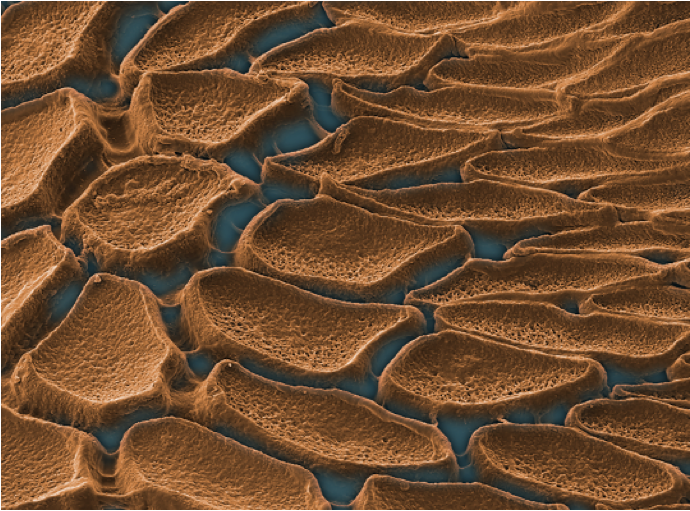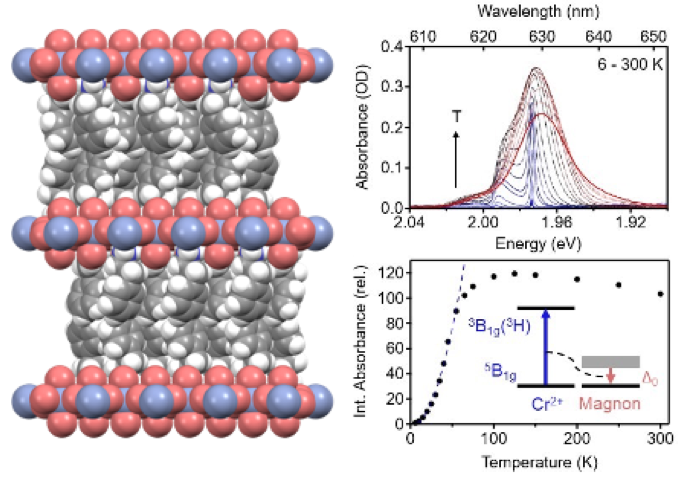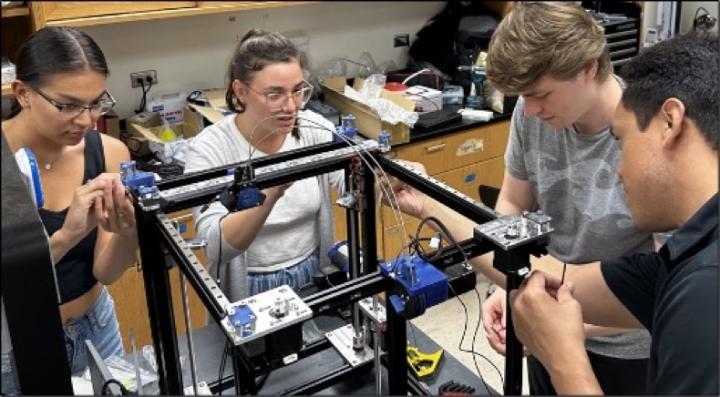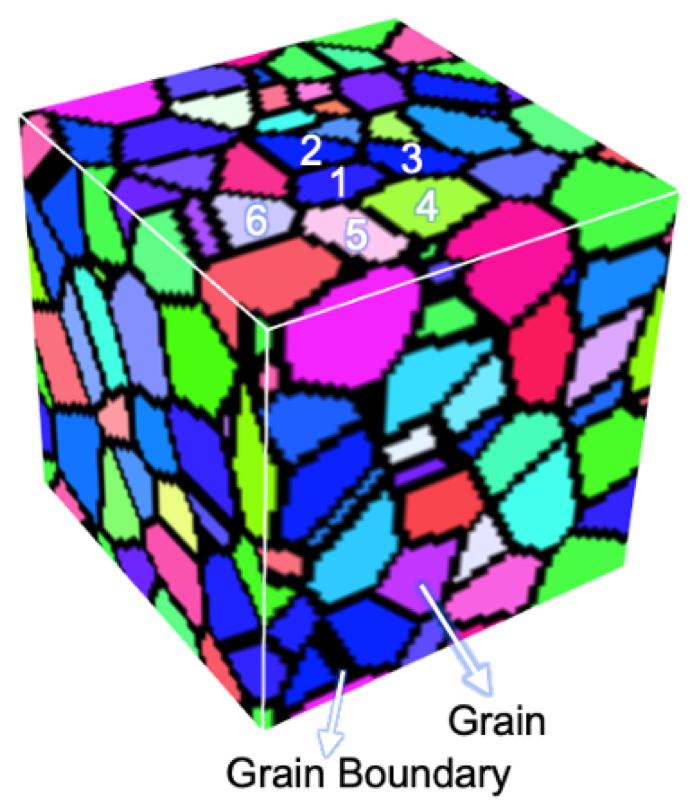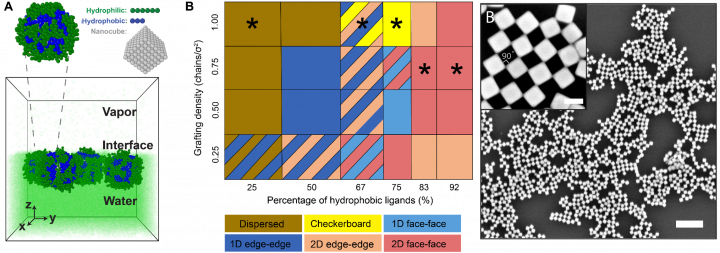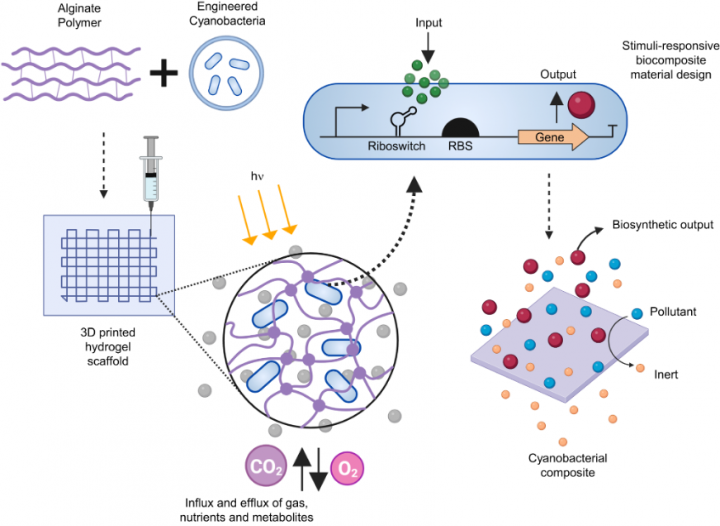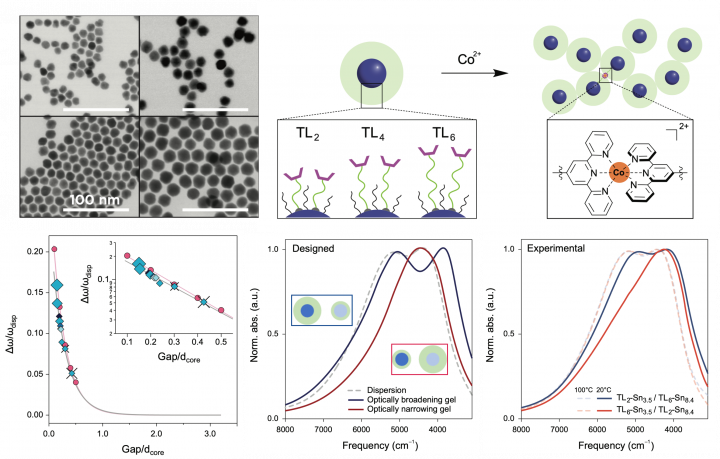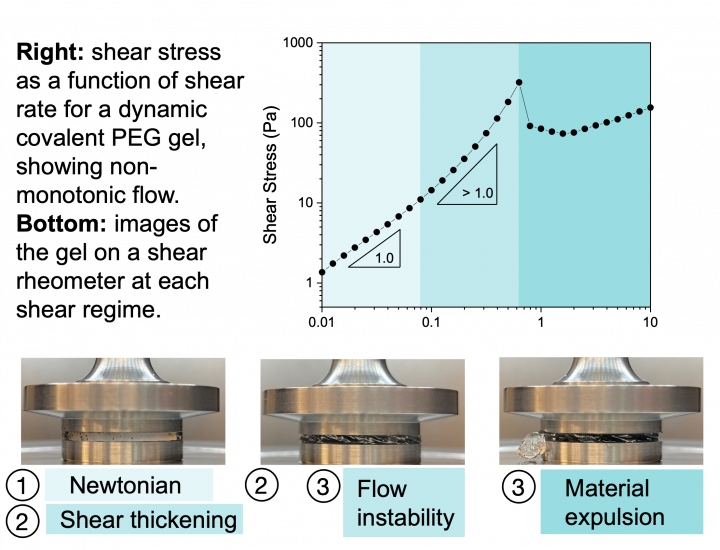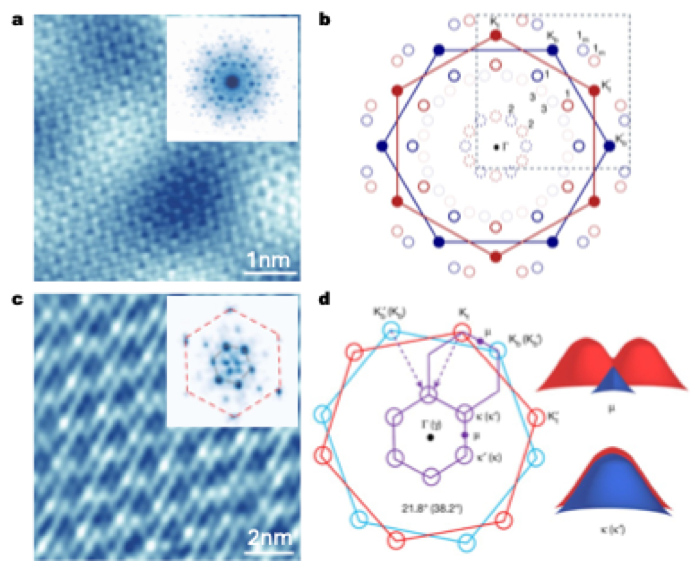This article studies the reversible structure and mechanical properties of a biological dynamic polymer network. This biological material based on structural protein polymers has a glass transition at 35 °C, causing a reversible thermomechanical transition and a change in modulus spanning several orders of magnitudes.

